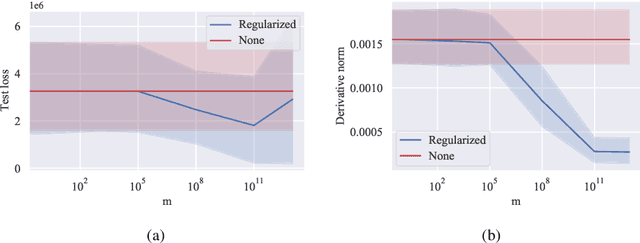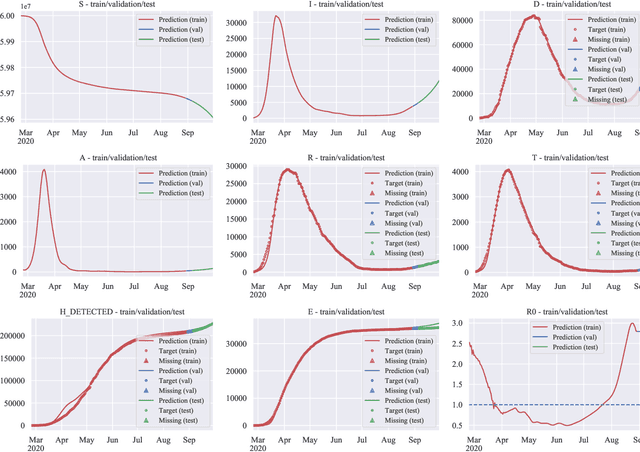Andrea Panizza
Robust Calibration For Improved Weather Prediction Under Distributional Shift
Jan 08, 2024Abstract:In this paper, we present results on improving out-of-domain weather prediction and uncertainty estimation as part of the \texttt{Shifts Challenge on Robustness and Uncertainty under Real-World Distributional Shift} challenge. We find that by leveraging a mixture of experts in conjunction with an advanced data augmentation technique borrowed from the computer vision domain, in conjunction with robust \textit{post-hoc} calibration of predictive uncertainties, we can potentially achieve more accurate and better-calibrated results with deep neural networks than with boosted tree models for tabular data. We quantify our predictions using several metrics and propose several future lines of inquiry and experimentation to boost performance.
On the Relationships between Graph Neural Networks for the Simulation of Physical Systems and Classical Numerical Methods
Mar 31, 2023


Abstract:Recent developments in Machine Learning approaches for modelling physical systems have begun to mirror the past development of numerical methods in the computational sciences. In this survey, we begin by providing an example of this with the parallels between the development trajectories of graph neural network acceleration for physical simulations and particle-based approaches. We then give an overview of simulation approaches, which have not yet found their way into state-of-the-art Machine Learning methods and hold the potential to make Machine Learning approaches more accurate and more efficient. We conclude by presenting an outlook on the potential of these approaches for making Machine Learning models for science more efficient.
Learning to Identify Drilling Defects in Turbine Blades with Single Stage Detectors
Aug 08, 2022



Abstract:Nondestructive testing (NDT) is widely applied to defect identification of turbine components during manufacturing and operation. Operational efficiency is key for gas turbine OEM (Original Equipment Manufacturers). Automating the inspection process as much as possible, while minimizing the uncertainties involved, is thus crucial. We propose a model based on RetinaNet to identify drilling defects in X-ray images of turbine blades. The application is challenging due to the large image resolutions in which defects are very small and hardly captured by the commonly used anchor sizes, and also due to the small size of the available dataset. As a matter of fact, all these issues are pretty common in the application of Deep Learning-based object detection models to industrial defect data. We overcome such issues using open source models, splitting the input images into tiles and scaling them up, applying heavy data augmentation, and optimizing the anchor size and aspect ratios with a differential evolution solver. We validate the model with $3$-fold cross-validation, showing a very high accuracy in identifying images with defects. We also define a set of best practices which can help other practitioners overcome similar challenges.
An Optimal Control Approach to Learning in SIDARTHE Epidemic model
Oct 28, 2020



Abstract:The COVID-19 outbreak has stimulated the interest in the proposal of novel epidemiological models to predict the course of the epidemic so as to help planning effective control strategies. In particular, in order to properly interpret the available data, it has become clear that one must go beyond most classic epidemiological models and consider models that, like the recently proposed SIDARTHE, offer a richer description of the stages of infection. The problem of learning the parameters of these models is of crucial importance especially when assuming that they are time-variant, which further enriches their effectiveness. In this paper we propose a general approach for learning time-variant parameters of dynamic compartmental models from epidemic data. We formulate the problem in terms of a functional risk that depends on the learning variables through the solutions of a dynamic system. The resulting variational problem is then solved by using a gradient flow on a suitable, regularized functional. We forecast the epidemic evolution in Italy and France. Results indicate that the model provides reliable and challenging predictions over all available data as well as the fundamental role of the chosen strategy on the time-variant parameters.
 Add to Chrome
Add to Chrome Add to Firefox
Add to Firefox Add to Edge
Add to Edge